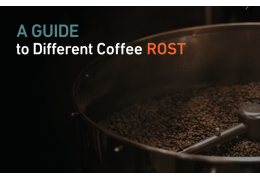In the bustling world of bakeries and restaurants, commercial foodservice equipment plays a crucial role in the...
How to Calculate Profitability and Return on Investment in the Restaurant Sector?
1. Calculate Gross Profit Margin
The gross profit margin measures the profitability of a restaurant's core operations. To calculate it, subtract the cost of goods sold (COGS) from the total revenue and divide the result by the total revenue. The formula is:
Gross Profit Margin = (Total Revenue - COGS) / Total Revenue
A higher gross profit margin indicates greater profitability as it shows how much revenue remains after accounting for the cost of ingredients and food preparation.
2. Determine Operating Profit Margin
The operating profit margin provides a measure of the profitability of a restaurant's operations, including overhead costs such as rent, labor, utilities, and marketing expenses. To calculate it, subtract the operating expenses from the gross profit and divide the result by the total revenue. The formula is:
Operating Profit Margin = (Gross Profit - Operating Expenses) / Total Revenue
A higher operating profit margin indicates better efficiency in managing operational costs and generating profits from sales.
3. Calculate Net Profit Margin
The net profit margin represents the overall profitability of the restaurant after accounting for all expenses, including taxes and interest payments. To calculate it, subtract the total expenses from the total revenue and divide the result by the total revenue. The formula is:
Net Profit Margin = (Total Revenue - Total Expenses) / Total Revenue
A higher net profit margin indicates stronger financial performance, as it reflects the percentage of revenue that translates into profit after all costs and expenses have been deducted.
4. Assess Return on Investment (ROI)
ROI measures the return on the investment made in the restaurant. To calculate ROI, divide the net profit by the total investment and multiply the result by 100 to express it as a percentage. The formula is:
ROI = (Net Profit / Total Investment) * 100
ROI provides insight into the profitability of the restaurant relative to the initial investment. A higher ROI indicates a better return on the investment made.
5. Analyze Additional Factors
While profitability and ROI calculations are essential, it's important to consider additional factors that impact the financial performance of a restaurant. These factors include cash flow, inventory management, labor costs, pricing strategies, and customer acquisition and retention. Analyzing these factors in conjunction with profitability metrics provides a more comprehensive understanding of the restaurant's financial health.
It's crucial to regularly monitor and analyze profitability and ROI to make informed business decisions and identify areas for improvement. Comparing these metrics against industry benchmarks or historical data can provide insights into the restaurant's financial performance relative to competitors or previous periods.
Remember that profitability and ROI calculations should be accompanied by a comprehensive analysis of other financial indicators, operational efficiency, customer satisfaction, and market trends to gain a holistic view of the restaurant's success.
.png)







Leave a comment